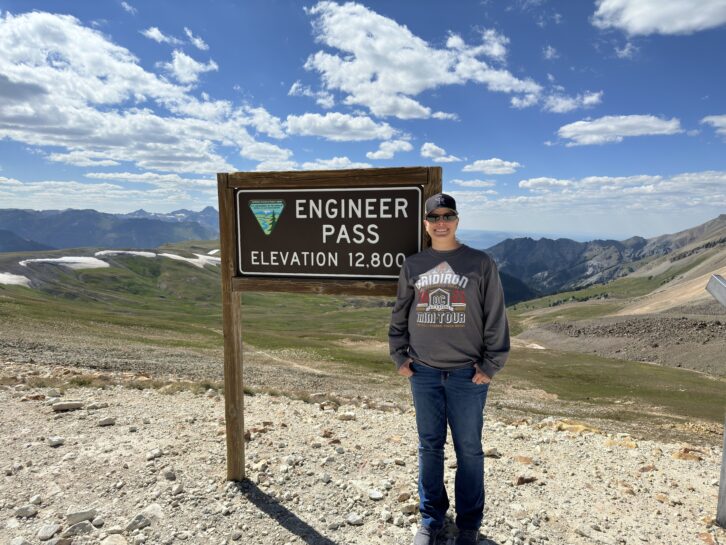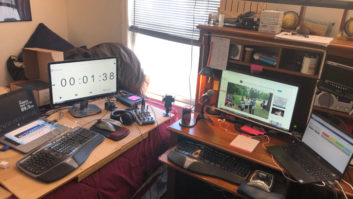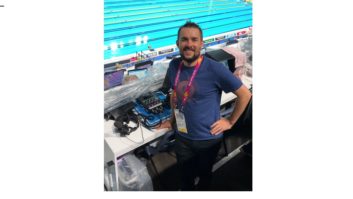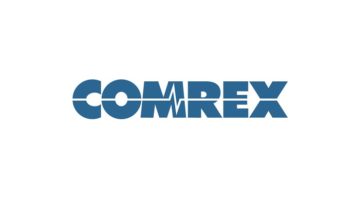This article is excerpted from the Radio World ebook “Trends in Codecs 2024.”
Amanda Hopp is chief engineer of Crawford Broadcasting’s four-station cluster in Denver. She is chair of the Denver SBE chapter and holds CBRE certification and an Amateur Extra radio license.
Radio World: Amanda what’s your perspective on the key trend in codecs?
Amanda Hopp: The fact that they have become more user-friendly is a big deal to me. No longer do I have to drive into the studio to check on something when a board op or producer calls and says a client cannot connect. I can easily use my phone app — Tieline’s ReportIT app in this case — or just log in with a web browser and check on things. More often than not, I find the issue to be user-related. Having that network capability allows for easier remote work and can save time when it comes to troubleshooting issues.
RW: Have you done a recent installation of interest?
Hopp: At Crawford, we migrated away from a different codec after having nothing but issues for several years. We had been using Tieline BridgeIT units for remote shows with clients and a Genie Distribution codec for transporting some company shows to other markets of ours. We very rarely had any issues, so when it came time to choose a new codec for our main audio transport, we went with Tieline.
We installed Gateway 8 codecs at the studio (a main and a backup, identically configured), a Gateway 4 at two of our sites that have multiple stations/feeds, and XTRAs at the rest of our sites in the Denver market.
We have been operating with these units for almost two years and with maybe a couple of units needing a reboot here and there, but otherwise we have not had any issues. We are able to send out audio from the studio out to the transmitter sites, and at one location, send several channels of satellite programming back to the studio. Audio quality is amazing. When used in remotes, with the exception of latency in some cases, listeners can’t tell the difference from being live in studio to being live from a remote location somewhere.

RW: How do today’s codecs integrate with AoIP infrastructures?
Hopp: My experience with Tieline has been seamless with our Wheatnet system. The Gateways and Genie Distribution codecs we have are Wheatnet-enabled, and we just add it into that system. The system will see its sources and destinations and we can route audio and GPIO with a click of a button plus a push of a key on the keyboard for security reasons.
I think that more and more, companies are realizing how important AoIP is. It has less wiring, which many engineers love. When an issue arises, we don’t have to go tracing down wires to find a failure point. With AoIP, it limits the possible failure points, making it easier to troubleshoot.
RW: What codecs or apps are most commonly used for doing radio news work from the field?
Hopp: While we don’t necessarily do news reports from the field at our Denver studios, we have several clients who choose to do their broadcast from the comfort of their home (and occasionally a beach in Hawaii).
We purchased a Shure MVi for use with the iPhone for one host/client, gave her a microphone and off she went. In conjunction with the ReportIT app, she is able to connect to the studio, have a good quality microphone and have an amazing sound.
In instances where there may be guests, we also have some other products that fit into a small Pelican case, to allow for multiple microphones to be used as well as have multiple headphones plugged in so everyone can hear what is going on. Before, a remote of any kind would involve tons of equipment, maybe a phone line or internet service being installed ahead of time. It was very time-consuming to plan out. Now, as long as there is good Wi-Fi or LTE/5G service, a broadcast of any kind can be done on a whim.
RW: What questions should an engineer be asking when considering solutions for large-scale distribution to single or multiple locations?
Hopp: My biggest fear in this is failure. While it is great having one piece of equipment sending audio to multiple locations, what happens when that piece of equipment fails? If a backup unit can be purchased and ready to go, then you must do that.
We have ours in the rack, programmed identical to the main unit. If something does happen to the main unit, or even if we need to do an update, I can disconnect the main unit and quickly connect the backup, taking each station down for a second or less.
The downfall is that I have to do it manually, I don’t see a way of doing it automatically. It still beats the alternative of having multiple equipment, but the question must be asked: What happens when it does go down? If you are okay with that answer, then I say go for it. You won’t regret it! And of course, paths must be over different infrastructure: microwave and cable, cable and fiber, microwave and wireless … each path using a different carrier if at all possible.
RW: What are the features you look for?
Hopp: A web GUI of some kind is a must. To have that remote access is critical for the engineer to be able to help troubleshoot an issue when it arises. I recently had a client who couldn’t hear our station. I had him disconnect from the unit and I connected with the app I have and was able to confirm things were working properly. And through that, I was also able to help walk him through what the issue most likely was (a simple volume control on his smartphone screen). Without the use of this, it may have taken me longer to confirm if things were indeed working and to actually know what to tell the client to look for to get it working for him. Another big thing is Forward Error Correction and the ability to do multiple outgoing and incoming streams.
RW: How can an engineer protect codecs and related infrastructure from cyber attacks?
Hopp: The first thing to do, which seems obvious, is to change that password. Any password that the unit comes with for admin or read-only should be changed to something complicated.
I recommend a phrase of some sort and using the first letter of each word. Then add in numbers or special characters. The other way is to take a word and shift it on the keyboard to the lower left or right, upper left or right and again, make sure there are numbers and special characters. The longer the better.
The next thing I recommend is having a firewall. Windows Firewall is not an option with this equipment. By having a firewall and not having port forwarding set up, you can help secure your sites.
VPNs are a great thing. I am still not too familiar with them, but we do have VPNs to allow me to have access to the transmitter side of things and to the office side of things when I’m working remotely. Because of this I don’t need to have all these ports open on our firewall and possibly allow hackers through.












